I’ve had the pleasure of working with multiple microphones throughout the studio musicianship classes I attended in college. However, when it came to tracking guitar, we only ever used ONE microphone. The Shure SM57 is the best microphone for recording guitar and has become the industry standard for professional recording studios.
It’s difficult to believe that such an affordable microphone would be used by professional recording studios across the globe. Dynamic (moving-coil) microphones such as the SM57 are some of the most durable as well, suitable for the toughest conditions. It provides more clarity than most microphones in this category which makes it perfect for recording guitar. Another interesting fact about this microphone is that it is identical to its cousin, the Shure SM58 (more on that later).
- Recording guitar with the toughest microphone on the planet
- The Shure SM57 is the best microphone for recording guitar
- Is the Shure SM57 exclusive to recording guitar?
- If the Shure SM57 isn’t for you, then you might prefer the SM58
- The compromise of recording studio vocals with the Shure SM58
- Industry-standard tracking with the Shure SM57 and SM58
Recording guitar with the toughest microphone on the planet
The Shure SM57 and SM58 are virtually indestructible. We can find countless stories of individuals burying, submerging, running over and dropping these microphones without putting them out of commission.
If these “amazing feats” teach us anything, it’s that these microphones are built to last!
Whether you’ll be tracking guitar at home or on the road, you can always rely on the SM57. It even works wonders for live recordings. It’s incredibly versatile and durable; TWO qualities that every microphone should possess.
Another contributing factor to the SM57’s and SM58’s durability is their legendary SPL. I wasn’t able to find the information, most probably because SPL is never really an issue with dynamic (moving-coil) microphones. However, it’s been said that cranking a 100W Marshall amplifier isn’t enough to overload them.
Considering how dynamic microphones are usually placed in close proximity to sound sources (a couple of inches away)… It can certainly handle more than your ears can. I assume you’d go deaf before you’d ever find the SM57’s and SM58’s limitations!
That being said, Shure has certainly built a reputation for manufacturing some of the world’s toughest microphones.
If something were to break, however, keep in mind that the screen, grille and cartridge are ALL replaceable.
The Shure SM57 is the best microphone for recording guitar
As I mentioned earlier, I’ve never been taught to use another microphone than the SM57 for guitar. Most recording studios will actually own several of these microphones since they can always be used in conjunction with other microphones.
However, the Shure SM57 does an excellent job of providing that “essential” guitar sound.

What truly distinguishes this microphone from other dynamic (moving-coil) microphones is its atypical grille design. Instead of incorporating the typical “bulb” grille design featured on the SM58, the SM57’s is flat.
The advantage with a flat microphone grille is that it allows us to get closer to the sound source. You can probably gain up to 1-inch using the SM57 compared to the SM58. Tracking guitar may require us to get as close to the speaker as possible.
Cardioid polar patterns are also great for isolating individual sound sources. The SM57 is known for its phenomenal off-axis rejection which can be quite useful in any environment. Recording at home may require us to track electric guitar in the same room we’re playing in, so we’ll be wanting to eliminate as much noise as possible.
What I really enjoy about the SM57’s frequency-response is its presence boost. It really makes acoustic/electric guitars cut through the mix. The microphone actually ranges from 40 Hz – 15,000 Hz which is excellent. I’d be using an EQ to cut anything above 15 kHz either way.
At the end of the day, you’ll have to do very little tweaking if you use this microphone to record the guitar.
Is the Shure SM57 exclusive to recording guitar?
We can use the Shure SM57 to record MUCH more than acoustic/electric guitar. It’s also an excellent choice for tracking snare drums, but will work wonders on toms as well.
This microphone is ideal for recording drum kits due to its ability to isolate multiple sound sources from one another.

I’ve seen it used on various instruments such as… Congas, brass instruments, string instruments and even vocals! However, I do recommend using a pop-filter if you plan on recording vocals with the SM57.
Its frequency response makes it ideal for recording just about anything, but be mindful of the SM57’s high-frequency roll-off. Like most dynamic microphones, you may lack that “shimmering” high-end that condenser microphones can provide.
I wouldn’t recommend using the Shure SM57 as drum overheads for this reason. Vocals could also benefit from a microphone with extended frequency response.
The most important characteristic of a dynamic microphone such as this one is the ability to track sound sources from extremely close. They’re like microscopes for sound (hence the term microphone). But I’d avoid tracking anything from a distance with the SM57.
It outputs approximately 150 Ohms, so your sound sources need to be loud enough.
If the Shure SM57 isn’t for you, then you might prefer the SM58
Let’s face it… Most of us recording music at home don’t have acoustically treated rooms. Certain types of microphones may not yield the best results in a home recording studio.
The Shure SM58 dynamic vocal microphone is probably one of the best options for recording live/studio vocals. Its cardioid polar pattern provides maximum isolation of any given sound source. Dynamic microphones are also designed to track sound sources in close proximity, so we’re likely to eliminate most of the ambient noise. The SM58 can provide extremely clean sound in live recording, so imagine what it can achieve in a home recording studio.
If you work in a particularly noisy neighbourhood/building, it’ll most likely show up in your recordings. Condenser microphones are so sensitive that they can pick up things like…
- Ventilation (building, computer, etc…)
- Electrical Appliances (fridge, computer, etc…)
- Traffic
- Neighbours
These are just a few of the noises you’ll have to deal with as a home recording studio owner. It’s not impossible to work with a condenser microphone, but we’ll need to be mindful of these things.
Instead of complicating things for myself, I decided to search for an alternative. Dynamic (moving-coil) microphones such as the Shure SM58 are MUCH less sensitive. Both the NT1-A and the SM58 possess cardioid polar patterns, but they don’t behave the same.
We’d never be capable of using a condenser microphone for live recording, but dynamic (moving-coil) microphones can reject ambient noise better than any other microphone type. This is what led me to believe that this type of microphone would work wonders in the home recording studio.
Was I right? You bet!
It’s so much easier to use a dynamic (moving-coil) microphone such as the SM58 for studio vocals at home. We still need to be mindful of microphone placement, but I’ve managed to track vocals during rush hour traffic… With my window open!
The compromise of recording studio vocals with the Shure SM58
Unlike most instruments, vocals can truly benefit from extended frequency response microphones. Condenser microphones are preferred because they can usually go up to 20 kHz.
The Shure SM58 is limited because it ranges from 50 Hz – 15,000 Hz.
However, I wouldn’t personally worry about it. If your ears are developed, you’ll surely hear the difference between the Rode NT1-A and the Shure SM58, BUT…
In the mix, it’ll become less obvious since the frequency spectrum will be filled with other instruments. You can even opt to boost the high-end of your vocal tracks using an EQ to provide more “air”. The SM58 takes EQ quite well, so this shouldn’t really become an issue.
It’s a small compromise to make considering how much cleaner your vocal tracks will sound.
Another thing we need to keep in mind is that condenser microphones have a better transient response. What this means is that they provide more depth when it comes to dynamic range. However, you can get the best of both worlds by pairing your SM58 with an inline microphone preamp.
Dynamic microphones are low-impedance instruments (low-output), so giving them more power will make them more responsive. Inline microphone preamps like the FetHead are usually used on dynamic (ribbon) microphones, but they work wonders on dynamic (moving-coil) microphones as well.
The reason condenser microphones don’t require such treatment is because they’re “active” and run on 48V phantom power.
Industry-standard tracking with the Shure SM57 and SM58
Whether you’ll be recording acoustic and/or electric guitar, the Shure SM57 has got you covered. Its owners have attempted to find its limitations, but have failed in doing so.
What this means is that the SM57 will most likely last you a lifetime!
It’s difficult to think of a situation that couldn’t benefit from its ability to get so close to the sound source. You could always combine the SM57 with another microphone to get the best of both worlds.
you may even want to consider owning a couple of these if you’re planning on hosting some large recording sessions. Isolating sound sources with the SM57 is quite efficient, so it’s also great for recording band rehearsals.
I find it difficult to believe that you can obtain all of this for such a small price. It’s probably one of the reasons Shure has had so much success in the sound recording industry.
But be cautious if you plan on purchasing this microphone. There are many “fakes” going around, so make sure you’re buying from a trusted retailer. eBay is probably not the best place to look for one of these microphones.
I hope you’ve found this product review insightful and if you have, please consider sharing it.
Here’s the SM57 for instrumentalists…
Here’s the SM58 for vocalists…
What do you think is the best microphone for recording guitar? Let us know in the comments and don’t forget to share this product review with your music producer friends. Thanks!


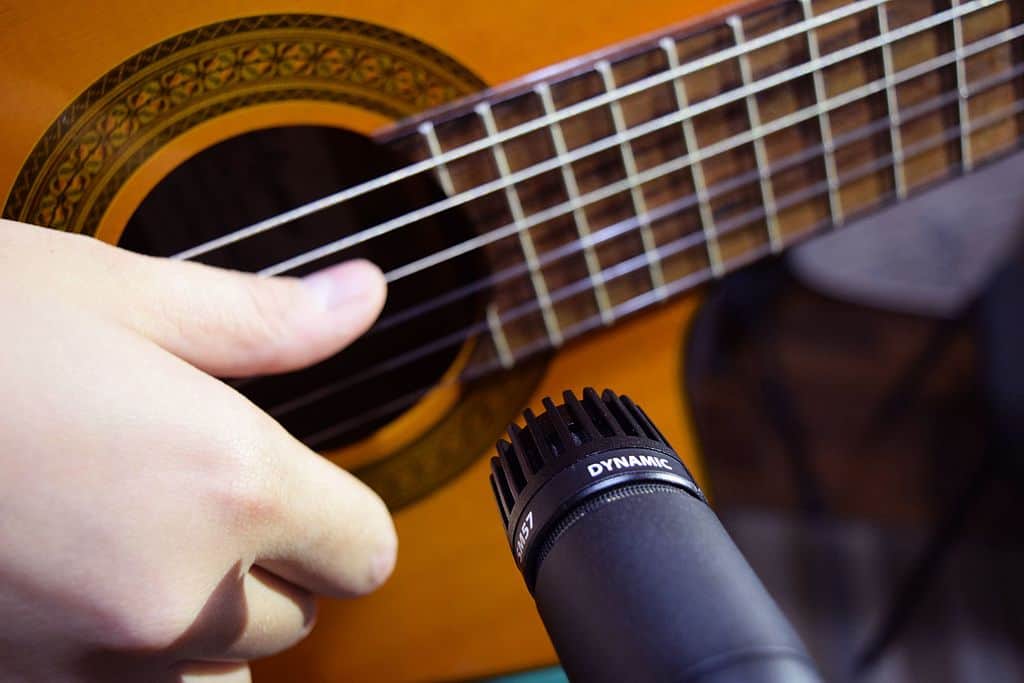
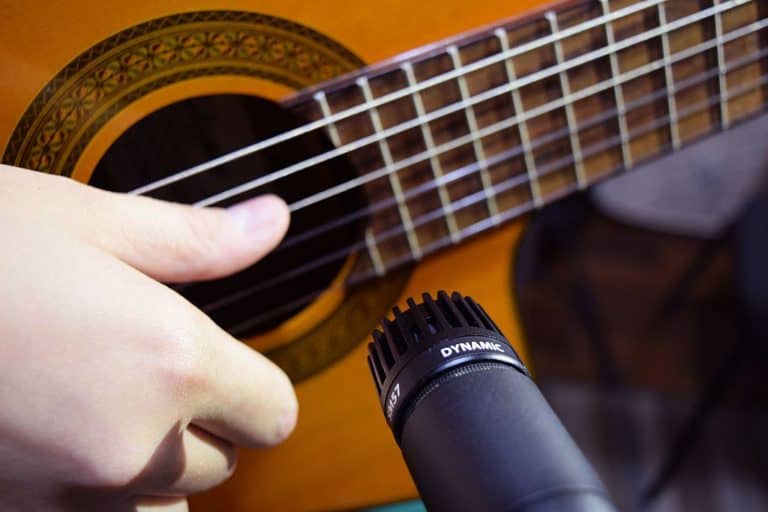
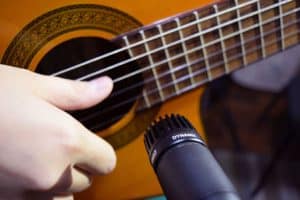
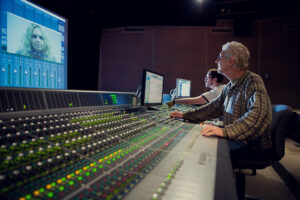

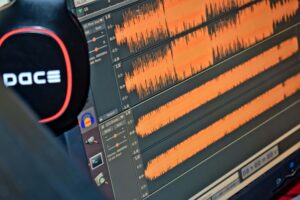

8 thoughts on “Shure SM57-LC Review”
The shure sm57 sounds like the perfect microphone! I definitely need to get one to record my guitar. I like the idea that this is indestructible, between my kids getting ahold of my stuff and me being clumsy that could come in handy. I can’t wait to get out and set it up and start playing. Thank you for the review!
Hey there Travis,
The SM57 is certainly child-proof!
You’ll really appreciate the sound quality. I barely need to do any editing when I use this mic.
Best of luck!
– Stefan
Thank you for sharing this review on the Shure SM57. You covered every aspect about this microphone and were very thorough. I also like how you talked about your own personal experience with the microphone and how you mentioned the features you like about it. This looks like a great microphone to use. Thanks for sharing!
I’m glad you found the review helpful Lana. Thanks for stopping by!
I am looking into mics for my youtube videos and stumbled on your post. The mic is awesome for recording accoustic sounds. Is it good for recording voice? I only ask because I am attempting to do voice over screenshare video and i was thinking this may be to good of a mic for that project. Please advise.
Thanks.
Hey Justin,
If you plan on recording your voice with the SM57, consider using a microphone pop-filter.
The advantage of this microphone is that you can record from REALLY close. This’ll give your voice that “radio-host” bass-response! The phenomenon is called the proximity effect, check it out.
If you’re looking for an alternative, this is the microphone I use to record voice-overs for my YouTube videos. It sounds great!
Hope this answers your question.
– Stefan
If these microphones can survive dropping, submerging, and running over, it is no wonder that many recording companies use the Shure SM57, right? 😉 It sounds like a very sturdy microphone, one that is worth buying. Unlike most products nowadays this microphone is one of the few that is still built to last. I do not play any instruments, but I would love to learn to play the drums. And I’m happy to read that this microphone also works well with drums. I also know a lot of musicians, so I will share this article with them. I’m sure they would love to read it.
Hey Christine,
It’s built like a tank! I encourage you to learn how to play drums. I’d love to hear you play someday!
Thanks for stopping by and sharing this article.
– Stefan